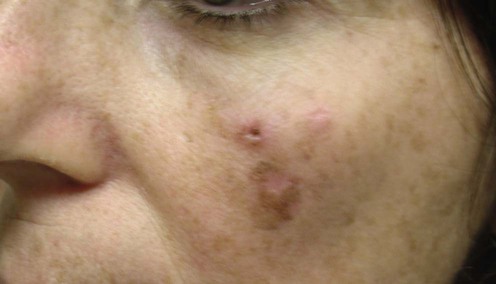Zalla MJ, Lim KK, Dicaudo DJ, Gagnot MM. Dermatol Surg 2000; 26: 771–84.
Lentigo maligna

First-line therapies
Mohs’ micrographic excision of melanoma using immunostains.
![]()
Stay updated, free articles. Join our Telegram channel

Full access? Get Clinical Tree




 Excision
Excision Mohs micrographic surgery
Mohs micrographic surgery Modified Mohs surgery
Modified Mohs surgery Staged excision
Staged excision